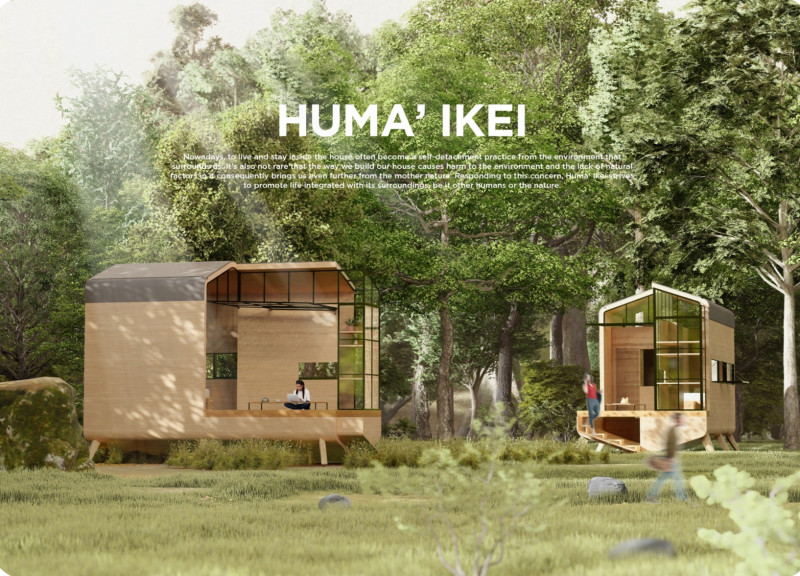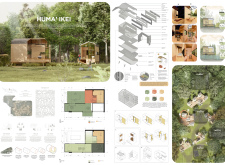5 key facts about this project
The Huma Ikei project is located in East Kalimantan, Indonesia, surrounded by rich tropical rainforests. The initiative responds to the country's decision to move its capital from Jakarta, which faces significant climate challenges, to this less populated area. Designed with a focus on sustainability, Huma Ikei aims to create a living environment that connects well with nature and encourages community interaction. Each home functions as both a residence and a workspace, addressing the needs of modern living.
Architecture Concept
The design features a cuboid shape that reflects traditional architecture found in Kalimantan. This form not only respects local culture but also improves construction efficiency. The roof is angled to maximize sunlight for integrated solar panels, showing a clear commitment to renewable energy use. This practical approach ensures homes are not only functional but also environmentally friendly.
Building Layout
The layout of the residential units promotes outdoor communal spaces. These areas allow for social gatherings among residents while maintaining individual privacy. Openings throughout the structure are strategically placed to enhance natural airflow and light, reducing the reliance on artificial lighting and cooling systems. This design creates a comfortable atmosphere that supports energy efficiency and day-to-day living.
Resource Management
Huma Ikei focuses on self-sufficiency through resource management. A rainwater harvesting system captures approximately 1,817 liters of water daily, effectively taking advantage of the region's high rainfall. This sustainable method promotes responsible water use and strengthens the community’s resilience. Additionally, organic waste is processed in digesters to produce compost, enriching the soil for local food growth.
Materials and Sustainability
The project uses materials that align with the goal of sustainability, including a wood structure, timber cladding, recycled timber joists, and cross laminated timber (CLT). The inclusion of solar panels highlights the commitment to reducing environmental impact and energy costs.
The design encourages greenery around homes, allowing for easy access to nature. This arrangement not only enhances the aesthetic of the community but also supports biodiversity and a healthier living environment.



















































